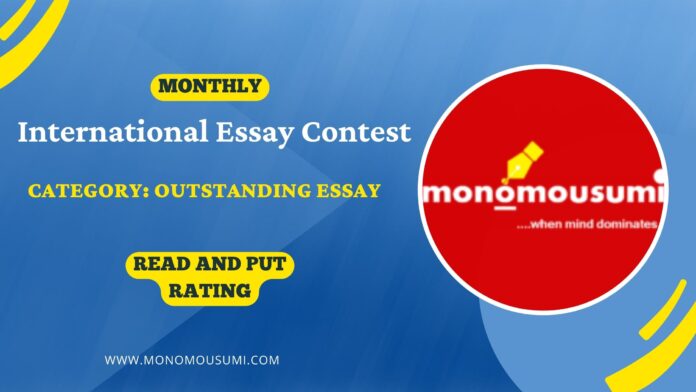It was the year 1894. In the burning, bustling streets of New York City, an unseen and mysterious enemy lurked, preying on the vulnerable. Children played freely in the streets at the time, their laughter echoing through the neighborhoods and invention of things will make the life better. But amidst the innocence, whispers spread like wildfire about a sudden wave of inexplicable paralysis affecting the city’s youngest souls.
Panic gripped parents as they saw their once lively and carefree children succumbing to an unseen menace. Children began to experience fevers, headaches, loss of appetite, nausea, and sometimes in the worst cases, intense pain and muscle spasms, progressing to limp paralysis and, finally—death. Parents prayed for a miracle, holding their children close to them. Nothing happened.
Thousands of children died. It was one of the first outbreaks of a disease that would become one of the most feared diseases in the U.S. for decades to come. It was Polio.
Polio is a disease caused by the poliovirus, a virus that belongs to the family Picornaviridae, a group of viruses that infects vertebrates, including fish, mammals, and birds. The Poliovirus has 3 types: type 1, known as PV1; type 2, known as PV2; and type 3, known as PV3. Each type has a slightly different protein capsid shell, which is the outer shell of a virus that protects the RNA inside the poliovirus.
Polio is spread through the respiratory route, and also through the mouth. A victim can be infected through contact with the feces of a person who already has polio. Throughout history, polio outbreaks have occurred in different parts of the world, affecting people of all ages but primarily targeting children. The virus is highly contagious and can spread through contaminated water or food and from person to person through the fecal-oral route.
In the 20th century, particularly during the 1940s and 1950s, polio epidemics swept many countries, causing widespread fear and panic. According to the American Institute for Economic Reserach, During one of the largest poliomyelitis epidemics in 1952, there were an estimated 57,628 cases of Polio, 21,269 paralyzed, and 3,145 dead. However, as of 2022, there have only been 22 cases of wild PV1 infections.
All polio strains have been eradicated from more than 220 countries. What happened? How did a scourge that once terrorized the world become so weak? It appears that amidst the devastating polio epidemics of the 20th century, a groundbreaking development emerged that would alter the course of history and save millions of lives. A vaccine was created.
Vaccines are an extraordinary feat of medical science. It harnesses the body’s immune system against infectious diseases. Vaccines contain antigens, substances that can trigger an immune response in your body.
These antigens are carefully and meticulously chosen to mimic the pathogens they defend against. The primary aim of vaccines is to educate the immune system, allowing it to recognize and remember the pathogens, so it can mount a swift and robust defense if the actual infectious agent invades the body.
The inventor of the vaccine was a man called Jonas Edward Salk. Jonas Salk was an American virologist who was born in New York City. He came from a working-class family of Jewish immigrants from Poland. Salk was born on October 28, 1914, and died on June 23, 1995.
Jonas Salk was a medical researcher who invented one of the first successful polio vaccines in 1954, ending an era of fear and death. Salk witnessed firsthand the death and paralysis induced by the polio virus and the suffering of families of infected children. Because of that, he was motivated to find a way to prevent polio and dedicated himself to polio research.
In 1942 Salk went to the University of Michigan on a research fellowship and hoped to develop an influenza vaccine. It wasn’t long before he could advance into the assistant professor of epidemiology position. It was in 1947 that he was appointed director of the Virus Research Laboratory at the University of Pittsburgh, and with funding from the National Foundation for Infantile Paralysis, he was able to develop a vaccine that would cure polio.
But how? Creating a vaccine for one of the most feared diseases at that time was no easy feat. The polio vaccine resulted from rigorous research, dedication, and collaboration. First, Salk began with an incredibly intensive study of the polio virus.
He worked meticulously to understand the virus’s structure, behavior, and transmission. In the 1940s, he identified and characterized three distinct strains of the polio virus, which was crucial information for developing an effective polio vaccine. Through his research, he realized that an effective vaccine would need to target all three strains, PV1, PV2, and PV3, to be successful.
His vaccine is considered one of the breakthroughs of vaccinology, as it uses inactivated viruses, contrary to popular belief, which required vaccines to have activated viruses for them to work. Salk believed that by neutralizing the virus’s ability to cause disease while being able to stimulate the immune system, he could create a safe and effective vaccine.
This approach was very different from the existing polio vaccines beforehand, which contained weakened polioviruses, which contained a risk of becoming virulent. To test his theory, Salk and his team grew large amounts of the polio virus and carefully killed them in a chemical compound called formalin, known as formaldehyde. This compound is mainly used as a disinfectant in industries.
After killing all of the viruses, Salk had to conduct extensive clinical trials to evaluate the vaccine’s efficacy and safety. In 1952, Salk initiated one of the largest medical experiments in history during that time.
This trial, which included over 1.8 million children, called the “Polio Pioneers”, participated in trials across the United States. These trials involved administering the vaccine to a large group of children while another group received a placebo. The placebos did not receive the actual vaccine but instead were given a harmless substance, often just a saline solution.
The results were promising, as the vaccinated children showed a significant reduction in the incidence of polio compared to the control group. Many of the placebo Polio Pioneers did, in fact contract polio, but all of them received medication. Finally, After years of tireless effort, on April 12, 1955, the announcement came that the polio vaccine developed by Jonas Salk was both safe and effective.
The news brought a sense of relief and hope to millions worldwide who had lived in fear of the crippling disease. This success of the polio vaccine propelled Salk to international fame, and he soon became a celebrated figure in the scientific community. His dedication to finding a preventive measure for polio earned him numerous accolades and honors. However, despite his groundbreaking work, he never received a Nobel Prize. His research and vaccine did not introduce anything new, and he only researched based on information from others.
As of 2023, almost all of the poliovirus on earth is getting wiped out, and polio just might be the second human disease ever to be eradicated. PV1 has been associated with the most infections, thus known as the most common type of poliovirus, and most eradication efforts are aimed towards PV1.
PV1 has various genetic strains that can cause various disease outcomes, from mild to severe. PV2 has been known historically for a significant portion of infections, but as of 2023, it has been eradicated. According to the Belgian Biosafety Server, PV2 wild poliovirus was declared eradicated in September 2015, with the last virus detected in India in 1999. And finally, PV3 was declared eradicated in 2019.
Today, there are only two countries in the world with polio: Afghanistan and Pakistan. According to the WHO, cases due to wild poliovirus have decreased by over 99% since 1988, from an estimated 350,000 cases to 6 reported cases in 2021. Jonas Salk’s vaccine laid the foundation for the development and widespread use of vaccines as a critical tool in preventing and containing infectious diseases.
The success of the polio vaccine not only brought about the near-eradication of polio but also sparked a paradigm shift in how the world approached public health challenges.
The creation of the polio vaccine by Jonas Salk shows the world the power of the scientific discovery and human determination in combating devastating diseases. Even the most feared diseases can be cured through rigorous research, innovative thinking, and collaboration.
The successful development and implementation of the polio vaccine showcased the potential of preventive medicine to transform public health globally. Salk’s vaccine ended an era of fear and death. It allowed children to go out and play on the streets. It allowed parents to not live in fear. It allowed for innovation on a global scale.
The creation of the polio vaccine shows us just how far scientific innovation and human determination can propel us in conquering once-insurmountable health challenges. Through the polio vaccine, countless lives have been saved, and untold suffering has been averted. Truly, the invention of the polio vaccine has changed the course of history.
By: Henry Lin
Write and Win: Participate in Creative writing Contest & International Essay Contest and win fabulous prizes.
















